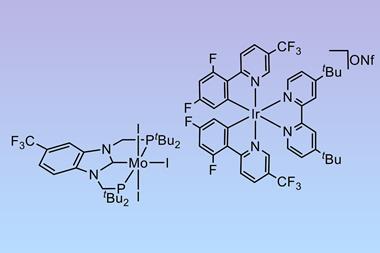High-throughput metabolomic profiling gives insight into unpredictable drug effects
Even well-known drugs can cause entirely unpredictable effects on metabolism, Swiss researchers have shown. Rapidly mapping the diverse effects of molecules on thousands of different metabolites could give new insights into the way drugs work, preventing side effects, as well as uncovering new uses for existing drugs.

The team monitored cell growth and quantified changes in 2269 putative metabolites produced by lung cancer cells exposed to one of 1520 small molecules. Time-lapse microscopy kept track of cell numbers, and time-of-flight mass spectrometry with flow injection analysis recorded metabolites.
While only a quarter of the molecules inhibited cell growth to any degree, over 85% caused measurable changes to cell metabolism. Because of the intricate and interconnected network of metabolites and interactions involved, it is challenging to predict a molecule’s full effects, beyond its intended targets.
‘You might find a drug that interferes with a target enzyme, but it is likely it will have some indirect effects on the rest of the metabolism,’ says pharmacologist Mattia Zampieri from the University of Basel, who led the research.
Some impacts were completely unexpected. For example, synthetic thyroid hormone tiratricol (recently recommended for approval in the EU to treat a rare thyroid condition) was found to also inhibit dihydroorotate dehydrogenase, an enzyme involved in DNA nucleobase synthesis that is targeted by drugs used to treat autoimmune disorders. This was not predictable based on its chemical properties or by computer modelling of its docking to the target, say the researchers.
Filling a data gap
‘Incorporating systematic metabolite profiling into our existing repertoire of cellular assays could be especially valuable in drug repurposing and for earlier assessment of potential off-target drug activities during development,’ says Steven Corsello, a chemical biologist at Stanford University, US, who was not involved in the research.
The study ‘fills in a metabolomics gap where a similar approach has already been taken with transcriptomic and proteomic profiling technologies,’ comments Dafydd Owen, senior scientific director of medicinal chemistry at Pfizer.
This ‘complements other phenotypic and molecular profiling technologies deployed when seeking insight on biological mechanism of action. The interest here is in the scale of what can be done in a single-pass experiment,’ adds Owen.
Metabolism drives diseases such as obesity and diabetes, but tweaking metabolism is also an attractive approach to treating immune conditions, cancers and neurodegenerative diseases, says Zampieri.
The method could be combined with genetic studies. ‘Using Crispr, you [could] knock down a gene and measure the metabolic response in the same way,’ says Zampieri. ‘Then by combining the chemical and genetic metabolic profiles, we can systematically look for drugs to treat diverse diseases and open up opportunities to treat rare genetic diseases.’
Another gain, says Zampieri, could be to correct a disease metabolic profile using a tailored cocktail of metabolite-altering compounds.
‘Existing drugs are often found to interact with unexpected molecular targets in cells. Identifying these interactions is useful to predict new indications, explain toxicities, and potentially uncover completely new molecular mechanisms,’ notes Corsello.
‘I find it especially interesting that metabolite profiling provided unique information compared to datasets employing other established types of readouts such as gene expression and cell morphology,’ Corsello adds. ‘This suggests that an approach integrating multiple technologies is needed to comprehensively profile drug action in cultured cells.’
Owen adds: ‘There have been longstanding efforts to repurpose approved drugs or clinical assets for new indications, as they have [already] been extensively profiled for safety. While this new metabolomic data matrix may be another tool to assist in directing known drugs towards treating other diseases, historically drug repurposing remains challenging.’
References
L Schuhknecht et al, Nat. Biotechnol., 2025, DOI: 10.1038/s41587-024-02524-5

















No comments yet